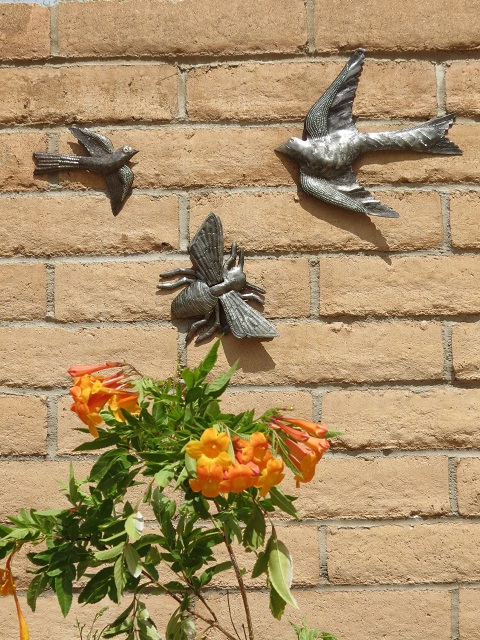The Birds and the Bees
As you know by now, we at It’s Cactus are always interested in how people use and display our products. Therefore, when a gentleman at one of the recent retail shows approached the check-out loaded with four birds and three bees and declared, “I can’t resist. I’m hanging these together,” we all started laughing appreciatively and applauding his wit. Birds and bees. Gotta love it. We’ve all heard that time-honored, picturesque euphemism for sex, but where did it originate??
Apparently you have to go back to England in 1825, when Samuel Coleridge wrote his poem “Work without Hope,” to find the first use of “birds and bees” as a metaphor for human sexual activity. To quote:
“All Nature seems at work. Slugs leave their lair –
The bees are stirring – birds are on the wing –
And Winter, slumbering in the open air,
Wears on his smiling face a dream of Spring!
And I, the while, the sole unbusy thing,
Nor honey make, nor pair, nor build, nor sing.”
It might be a stretch, but it’s the earliest documentable hint of birds and bees together in that connotation.
Later, in 1875, American naturalist John Burroughs wrote a set of essays entitled, “Birds and Bees, Sharp Eyes and other Papers.” Burroughs aimed to present the workings of nature to children in a way that they could easily understand and appreciate. One might also leap to the assumption that his descriptions were vague enough for the comfort and refined sensibilities of Victorian era parents. His work does refer to bird and bee activity, but conspicuously does not include any specific reference to the phrase, “birds and bees” with regard to sex. It is therefore curious to me that he gets any credit for the metaphor at all, but so be it. Theories are theories and who am I to argue?
Finally in 1928, American composer Cole Porter wrote “Let’s Do It,” which lyrically presents the pretty metaphoric picture in the song’s introduction:
When the little bluebird
Who has never said a word
Starts to sing Spring
When the little bluebell
At the bottom of the dell
Starts to ring Ding dong Ding dong
When the little blue clerk
In the middle of his work
Starts a tune to the moon up above
It is nature that is all
Simply telling us to fall in love
Porter appears to have been making deliberate, if oblique, reference to ‘the birds and the bees’ and it is reasonable to assume that thereafter, the phrase became a part of the common vernacular. Just for fun, I thought I’d listen to a Billie Holliday performance of the song on YouTube. Wouldn’t you know it? Her 1935 rendition didn’t include the introduction! I had to go to the soundtrack of Woody Allen’s 2011 film “Midnight in Paris” to hear the song performed by Conal Fowkes in its entirety. So for the nostalgic and the curious among you – Voila! http://www.youtube.com/watch?v=eraOhezY23s
Contributed by Linda for It’s Cactus/Beyond Borders

